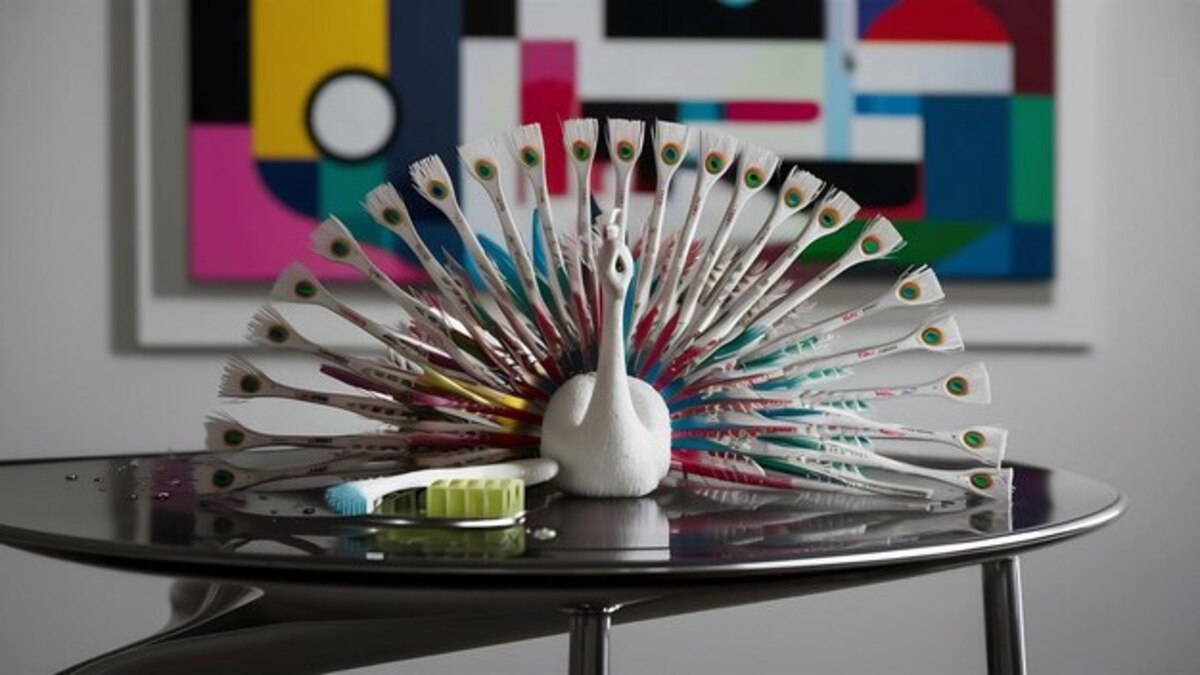Visual harmony: creating spaces with art and functionality

Harmonizing art and functionality in the home is a task that goes beyond simple decoration; it is about creating spaces that reflect your personality while maximizing their use. In this article, I invite you to discover how to achieve a balanced and welcoming atmosphere, where each element not only beautifies but also serves a purpose. From the selection of artworks to the clever arrangement of furniture, you will learn to transform your home into an aesthetic and practical refuge that invites you to enjoy every corner.
The importance of the balance between art and functionality
Creating a harmonious home involves recognizing the duality between art and functionality. Each piece you choose, whether a work of art on the wall or a decorative piece of furniture, should have a specific place that not only enhances the space's aesthetics but also fulfills a practical need. Balance is achieved when each artistic element seamlessly integrates into the overall design, allowing creativity to flow while meeting everyday needs. This fusion transforms spaces into places where you can enjoy not only their beauty but also their utility.
In addition, by finding this balance between art and functionality, you are also communicating your personal style and values. An elegant sofa can serve as both a visual focal point and a comfortable seat for your guests; a vibrant painting can enliven a room without sacrificing its original purpose. By choosing elements that are both appealing and useful, you create environments that invite living and enjoyment. Thus, every corner of your home becomes an extension of yourself, where aesthetics are not merely superficial but deeply integrated into your daily life.
2. Selecting artworks that inspire
Selecting artwork that inspires is a fundamental step to achieve visual harmony in your home. By choosing pieces that resonate with your emotions and experiences, you not only beautify the space but also create an environment that motivates you and brings you happiness. Opt for works that reflect your interests, whether they are serene landscapes, vibrant portraits, or intriguing abstracts; each choice should tell a personal story. Thus, the walls of your home become an extension of your identity, inviting those who visit you to connect with you through art.
Additionally, consider the color palette and themes present in the selected works to ensure aesthetic coherence within the space. Artworks can act as visual anchors in any room: a large painting can serve as a focal point in the living room, while several smaller pieces can be grouped to create a personalized gallery in a hallway or above a piece of furniture. By balancing these elements with the functionality of the space—such as the arrangement of furniture and lighting—you can transform any area into an attractive and welcoming retreat where art not only decorates but also contributes to the overall well-being of the home.
3. Multifunctional furniture: style without sacrifices
Multifunctional furniture has become an essential solution for those looking to optimize space without sacrificing style. These clever designs allow for the combination of multiple functions in a single object, such as sofas that convert into beds, coffee tables with hidden storage, or desks that fold away when not in use. By integrating these pieces into the decor, not only is the available space maximized, but a more organized and visually appealing environment is also created. The key is to choose furniture that reflects your personal style and is versatile, adapting to the changing needs of your daily life.
In addition to their functionality, multifunctional furniture can be true works of art in themselves. With a variety of materials and finishes available, it's possible to find options that complement any decorative style, from modern to rustic. When selecting these elements, consider how they fit within the overall scheme of your home; look for those that offer a balance between aesthetics and utility. This way, each piece will not only contribute to the visual harmony of the space but also facilitate everyday life by making it more practical and enjoyable. A well-designed home invites you to enjoy every corner without compromising taste or functionality.
4. Colors and textures: creating visual harmony
Colors and textures are fundamental elements in creating a visual harmony that complements both the art and functionality in your home. When selecting a color palette, it is essential to consider not only your personal preferences but also how these tones will interact with natural light and the objects already present in the space. Soft and neutral colors can visually expand a small area, while darker and deeper tones bring warmth and character to larger spaces. Additionally, textures play a crucial role in adding depth and interest; from the softness of a velvet sofa to the rusticity of an aged wooden table, each texture can provide a unique sensation that invites touch and interaction.
Combining different colors and textures requires a careful approach to avoid overwhelming the space. An effective strategy is to choose a main color that serves as the foundation for the room's design, complementing it with more vibrant or contrasting accents in accessories like cushions, curtains, or artwork. Additionally, incorporating different materials—such as metal, glass, or ceramics—can enrich the sensory experience of the environment. The key is to maintain a balance: for instance, if you decide to include eye-catching decorative elements or bold patterns, make sure to balance them with quieter areas to achieve a visual cohesion that invites relaxation and enjoyment of the space without unnecessary distractions.
5. Open spaces: integrating art into design
The integration of art in open spaces is a powerful strategy to create a visually appealing and functional environment. By opting for a design that combines living areas, dining, and kitchen, natural light and the spaciousness of the area can be utilized. Here, artworks can serve as focal points that guide the eye and add character to the layout. For example, a large abstract painting on a clear wall not only beautifies the surroundings but can also influence the choice of colors and textures in the surrounding furniture and accessories, thus creating an unmatched harmony.
Additionally, open spaces provide the perfect opportunity to play with different types of art: contemporary sculptures, vibrant murals, or personal photographs can coexist without issue. The key is to maintain visual balance; therefore, it is advisable to select pieces that complement the furniture without overwhelming the environment. Strategic arrangement allows each element to have its place without detracting from the functionality of the space. With these considerations in mind, you can transform your home into a place where art not only decorates but also fosters meaningful interactions among those who inhabit it.
6. How to use lighting to highlight art pieces
Lighting is a powerful tool to highlight artistic pieces in any home. By choosing the right light, not only are the colors and textures of the artworks accentuated, but an atmosphere that invites contemplation is also created. Use directional lights, such as spotlights or wall sconces, to direct the beam of light towards the pieces you want to highlight. Warm light can provide a cozy feeling, while white light enhances details and nuances. Consider incorporating dimmers in your lamps to adjust the light intensity according to the occasion, allowing for a dynamic interplay between the art and the space.
In addition to the types of lighting, it is essential to consider the placement of light sources. Placing a piece of art near a window allows you to take advantage of natural light during the day; however, this can be complemented with strategically positioned artificial lights to create an immersive effect as night falls. Experimenting with different angles and heights can also drastically change how a piece is perceived; for example, lighting from below can add a dramatic touch to more imposing sculptures or paintings. Ultimately, remembering that each space is unique will help you find that perfect balance where each artistic element shines with its own light within the harmonious whole of the home.
7. Sustainable decoration: beauty with environmental awareness
Sustainable decor has become an essential approach for those looking to create a beautiful and environmentally conscious home. By choosing recycled materials, second-hand furniture, or products made with eco-friendly techniques, you are not only enhancing the aesthetics of your space but also contributing to the health of the planet. Incorporating elements such as organic textiles, handmade ceramics, and handcrafted decorations can add a unique character to your home while minimizing environmental impact. Thus, each piece you choose tells a story and reflects a more responsible way of life.
Additionally, sustainable decoration promotes a lifestyle more connected to nature. Choosing natural plants or vertical gardens not only beautifies indoor and outdoor spaces but also improves air quality and provides a sense of freshness and tranquility. Visual harmony is achieved by integrating these green elements into your design; you can play with different heights and textures to create a balanced and dynamic environment. At the end of the day, decorating with environmental awareness is a way to express your personal values while creating a cozy refuge that invites meaningful moments with loved ones.
8. Personalize your space with unique details.
Personalizing your space with unique details is one of the most effective ways to infuse character and warmth into your home. Choosing elements that tell a story or are meaningful to you not only beautifies the environment but also creates a sense of belonging. From framed family photographs to travel souvenirs that evoke cherished memories, each object has the potential to become a focal point that invites conversation and stirs emotions. The key is to select pieces that speak to your experiences and personal tastes, thus forming a visual collage that reflects your identity.
Additionally, personalizing your space also involves playing with unique textures and materials. Consider incorporating local crafts, handmade textiles, or recycled furniture that bring originality and sustainability to your home. These details not only add visual interest but can also be functional; like a coffee table made from recycled pallets or decorative cushions crafted by local artists. By integrating these unique elements into the decor, you will create a cozy and authentic atmosphere where every corner is a tangible expression of your personal style and values.
9. The psychology of design: how it influences our well-being
The psychology of design plays a crucial role in how we experience and feel within our spaces. Every color, texture, and arrangement of elements has the power to evoke specific emotions and affect our mood. For example, soft tones like blue or green can induce a sense of calm and serenity, ideal for bedrooms or relaxation areas. In contrast, more vibrant colors like yellow or red can energize a space, turning it into a conducive place for creativity and social interaction. By considering these psychological aspects when designing your home, you can create environments that are not only visually appealing but also promote lasting emotional well-being.
In addition to colors, the functionality of the design also impacts our perception of space. A well-organized home with a logical layout not only maximizes its use but also reduces the stress and anxiety associated with clutter. The incorporation of multifunctional elements —such as sofa beds or extendable tables— allows for adaptation to different needs without sacrificing style or comfort. By creating clearly defined areas within the same environment, a sense of order and mental peace can be promoted. Thus, by combining art and functionality with emotional intelligence, you transform your home into a refuge where every corner breathes harmony and well-being.
10. Current trends in decoration that combine art and functionality
Current trends in decoration are increasingly focused on the integration of artistic pieces that are not only visually appealing but also serve practical functions. For example, multifunctional furniture has become an undisputed protagonist; from coffee tables that transform into desks to shelves that serve as room dividers, these pieces allow for space optimization without sacrificing aesthetics. Furthermore, the incorporation of interactive or functional wall art, such as decorative panels that also act as chalkboards or acoustic elements, reflects a creative approach that seeks to transform walls into living and useful canvases.
Another trend is the use of sustainable materials and artisanal techniques that give a unique character to each space. Handmade decorative elements not only bring a story behind them, but also promote a more conscious and environmentally respectful lifestyle. By choosing artworks or decorative accessories made from recycled or natural materials, a visual harmony can be achieved that resonates with both functionality and social responsibility. Thus, creating spaces where art and utility coexist becomes an innovative way to express your personal style while contributing to a more balanced and sustainable world.



